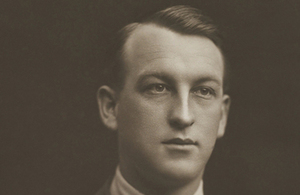WW1 Australian VC recipient John Patrick Hamilton
The story of Australian First World War Victoria Cross recipient John Patrick Hamilton.

John Patrick Hamilton [Credit: Australian War Memorial P01383.015]
66 men from Australia received the Victoria Cross, Britain’s highest award for gallantry, during the First World War. As part of the Centenary Commemorations the people of the United Kingdom marked their gratitude to those courageous men by presenting a bronze memorial plaque to their home country engraved with their names. The plaque is now displayed at the Australian War Memorial. This archive tells their stories.
DOB: 24 January 1896
Place of Birth: New South Wales, Australia
Date of Action: 9 August 1915
Place of Action: Lone Pine, Gallipoli
Rank: Private
Regiment: 3rd Battalion, Australian Imperial Force
John Patrick Hamilton was born on 24 January 1896 in Orange, New South Wales, Australia. He was a butcher in Sydney, before enlisting at the age of eighteen in the 3rd Battalion, Australian Imperial Force. He subsequently, sailed for Gallipoli where he took part in the landing at Anzac Cove on 25 April 1915.
He was awarded the Victoria Cross, for most conspicuous bravery on 9 August, in the Gallipoli Peninsula. During the intense assault by the enemy he left the trenches, and went out onto to the parapet to halt the advance. His citation notes:
During a heavy bomb attack by the enemy on the newly captured position at Lone Pine, Private Hamilton, with utter disregard to personal safety, exposed himself under heavy fire on the parados, in order to secure a better fire position against the enemy’s bomb throwers. His coolness and daring example had an immediate effect. The defence was encouraged, and the enemy driven off with heavy loss.
Hamilton received the only Victoria Cross to be awarded to his unit during the war. After Gallipoli, his battalion was redeployed to the Western Front where he fought until the end of the war, and reached the rank of Sergeant. He was subsequently commissioned as a second lieutenant in 1919. He was then promoted to lieutenant before returning home to Sydney after the war. He worked as a wharf labourer for over thirty years, and also served in the Second World War. He died in Sydney in 1961.